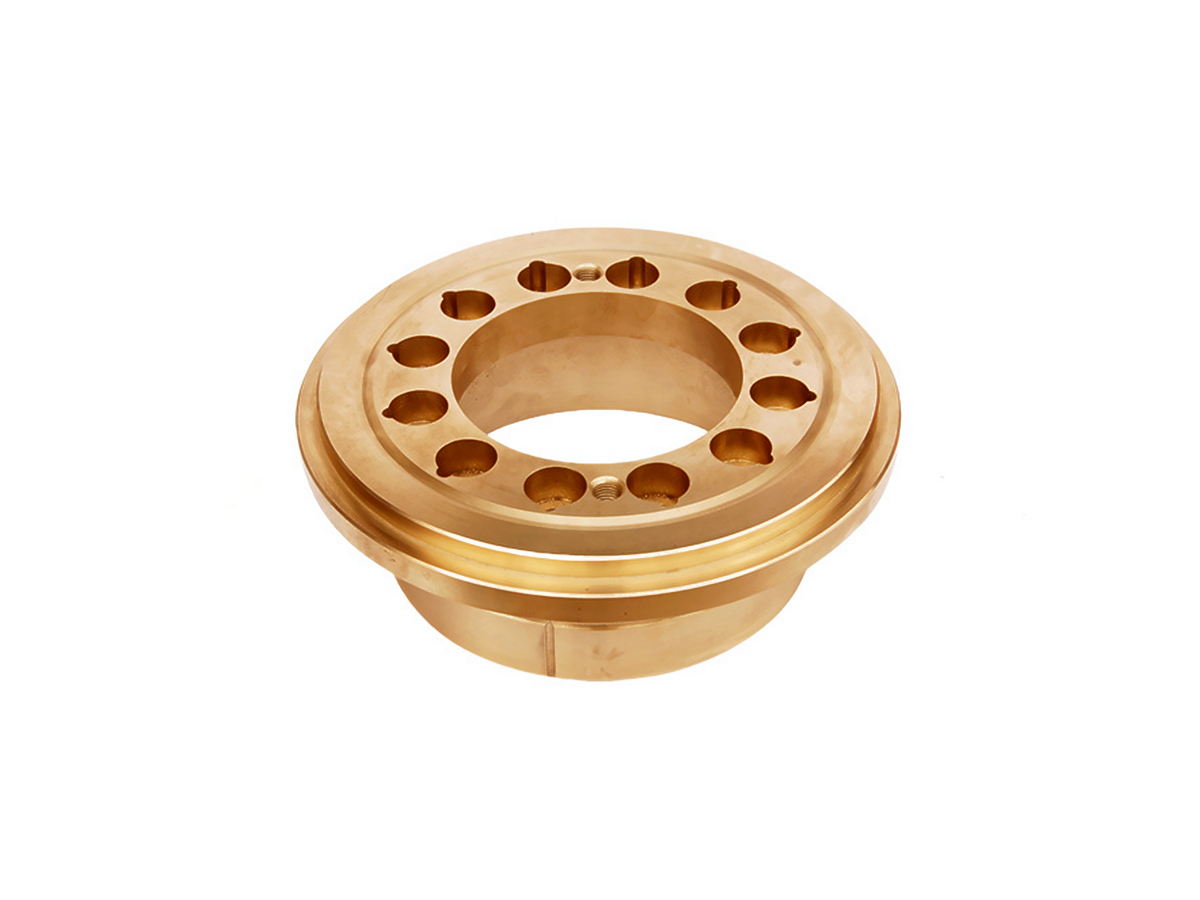High-Precision CNC Machining of C52100 Phosphor Bronze for Durable Springs and Bushings
Introduction
Industries requiring durable, reliable, and high-performance mechanical components often rely on specialized alloys like C52100 Phosphor Bronze. Known for exceptional elasticity, high strength (tensile strength up to 620 MPa), superior fatigue resistance, and excellent wear resistance, C52100 is ideal for precision springs, bushings, and similar mechanical parts. This alloy’s outstanding properties ensure reliable operation and extended component life in challenging applications, including automotive, industrial equipment, and consumer products.
Advanced CNC machining techniques enable precise and consistent fabrication of C52100 Phosphor Bronze parts, delivering high accuracy, intricate geometries, and superior surface finishes. CNC machining ensures component consistency, optimal performance, and durability critical for springs and bushings.
C52100 Phosphor Bronze for Springs and Bushings Applications
Material Performance Comparison
Material | Tensile Strength (MPa) | Yield Strength (MPa) | Fatigue Resistance | Typical Applications | Advantage |
|---|---|---|---|---|---|
550-620 | 380-450 | Excellent | Precision springs, durable bushings | High strength, superior elasticity | |
450-520 | 270-350 | Very Good | Connectors, standard bushings | Good machinability, balanced strength | |
340-470 | 170-310 | Moderate | General fittings, non-critical springs | Excellent machinability | |
1100-1300 | 965-1035 | Outstanding | High-performance springs, contacts | Exceptional strength, fatigue life |
Material Selection Strategy
Selecting appropriate alloys for springs and bushings involves evaluating strength, fatigue resistance, elasticity, and machinability:
Precision springs, durable bushings, and critical components requiring high strength (550-620 MPa), exceptional elasticity, and excellent fatigue resistance significantly benefit from C52100 Phosphor Bronze, providing consistent performance and extended service life.
Standard connectors, general-purpose bushings, and moderately stressed components needing balanced mechanical strength (450-520 MPa) with very good machinability often use C51000 Phosphor Bronze, optimizing both production efficiency and durability.
General fittings, less critical springs, and low-stress components requiring excellent machinability and moderate strength (340-470 MPa) typically utilize Brass C360, reducing machining costs while maintaining adequate performance.
High-performance springs and electrical contacts demanding superior mechanical strength (1100-1300 MPa) and fatigue resistance select Copper C172 Beryllium Copper, maximizing reliability and durability in demanding conditions.
CNC Machining Processes
Process Performance Comparison
CNC Machining Technology | Dimensional Accuracy (mm) | Surface Roughness (Ra μm) | Typical Applications | Key Advantages |
|---|---|---|---|---|
±0.01-0.02 | 0.8-1.6 | Cylindrical bushings, pins | Efficient machining, excellent accuracy | |
±0.003-0.01 | 0.2-0.6 | Complex spring shapes, precision bushings | Intricate geometry, superior accuracy | |
±0.01-0.03 | 1.6-3.2 | Mounting holes, connector fittings | Fast, accurate hole placement | |
±0.002-0.01 | 0.1-0.4 | Precision mating surfaces, bushings | Exceptional precision, fine surface finishes |
Process Selection Strategy
Choosing CNC machining processes for C52100 Phosphor Bronze springs and bushings involves complexity, accuracy, and application-specific requirements:
Cylindrical bushings, pins, and straightforward rotational components requiring moderate precision (±0.01-0.02 mm) effectively utilize CNC Turning, ensuring quick production with consistent dimensional accuracy.
Complex spring shapes, precision bushings, and intricate components requiring extremely tight tolerances (±0.003-0.01 mm) significantly benefit from Multi-Axis CNC Milling, optimizing both accuracy and intricate geometry.
Mounting holes, connector fittings, and less intricate machining tasks needing quick and reliable accuracy (±0.01-0.03 mm) employ CNC Drilling, reducing production times while ensuring precise hole placement.
Precision mating surfaces, highly accurate bushings, and critical components requiring ultra-tight tolerances (±0.002-0.01 mm) and fine surface finishes (Ra ≤0.4 μm) utilize CNC Grinding, maximizing performance reliability and component quality.
Surface Treatment
Surface Treatment Performance
Treatment Method | Corrosion Resistance | Wear Resistance | Max Operating Temp (°C) | Typical Applications | Key Features |
|---|---|---|---|---|---|
Exceptional (≥1000 hrs ASTM B117) | High | Up to 250 | Durable bushings, connectors | Enhanced wear resistance, corrosion protection | |
Excellent (~900 hrs ASTM B117) | Moderate-High | Up to 300 | Precision springs, bushings | Smooth surface, reduced friction | |
Excellent (~1000 hrs ASTM B117) | Moderate | Up to 200 | Internal mechanical components | Superior surface purity, corrosion protection | |
Outstanding (~1200 hrs ASTM B117) | Excellent | Up to 400 | High-wear springs, bushings | Superior durability, wear resistance |
Surface Treatment Selection
Selecting surface treatments for C52100 Phosphor Bronze springs and bushings involves evaluating corrosion resistance, friction reduction, and wear performance:
Durable bushings and connectors significantly benefit from Electroplating (Tin/Nickel), enhancing wear resistance and corrosion protection.
Precision springs and bushings requiring smooth finishes and reduced friction utilize Electropolishing, ensuring superior functionality and long-term performance.
Internal components and precision mechanical parts needing reliable corrosion resistance select Passivation, maintaining surface purity and enhancing reliability.
High-wear springs and critical bushings demanding exceptional wear resistance and durability significantly benefit from advanced PVD Coating, extending component life in challenging environments.
Quality Control
Quality Control Procedures
Dimensional verification using Coordinate Measuring Machines (CMM) and optical comparators.
Surface roughness inspection with advanced profilometers.
Mechanical property testing (tensile, hardness, fatigue) per ASTM standards.
Corrosion resistance evaluations via ASTM B117 (Salt Spray Test).
Non-destructive testing (NDT), including ultrasonic and radiographic inspections.
Complete documentation complying with ISO 9001 and relevant industry-specific quality standards.
Industry Applications
C52100 Phosphor Bronze Component Applications
Precision springs and durable mechanical bushings.
Automotive connectors and electrical fittings.
Industrial equipment components and wear-resistant parts.
Precision instrument fittings and mechanical elements.
Related FAQs:
Why is C52100 Phosphor Bronze ideal for springs and bushings?
How does CNC machining enhance precision in C52100 parts?
What surface treatments improve C52100 Phosphor Bronze durability?
Which industries commonly use C52100 Phosphor Bronze components?
What quality standards are followed for CNC machining C52100 components?

